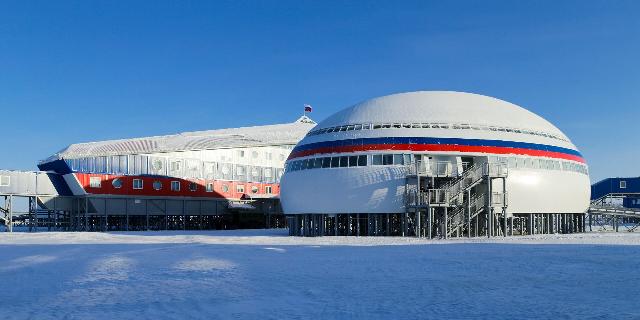NYT: Russia retaliated to NATO expansion
The appearance of tents, hangars for fighter jets and military equipment depots near the Finnish border indicate the expansion of Russia's military presence on the borders of one of the new NATO members, writes NYT. Fortunately, the authors of the article are smart enough to understand that this is a response to the expansion of the alliance.
Jeffrey Gettleman, Amelia Nierenberg, Johanna Lemola
Russian troops are strengthening bases and building military infrastructure near the borders of Finland, as can be seen from recent satellite images. These preparatory steps may shed light on Moscow's future strategy after the end of the Ukrainian conflict.
The images, confirmed by NATO officials, show rows of new tents, rebuilt warehouses for military equipment, hangars for fighter jets, and bustling activity at the helicopter base, which had previously been largely unused and overgrown.
At this stage, these steps appear to be the preliminary stages of a larger and longer-term expansion. NATO representatives emphasize that this is not at all like the gathering of forces to the borders of Ukraine before the start of the Russian special operation in 2022. At the moment, Russia is engaged in military operations in Ukraine, and its presence near the Finnish border can be described as very modest. The Finns themselves claim that this poses no particular threat, at least not yet.
However, Finland is one of the newest members of NATO and joined the alliance only two years ago. Therefore, these steps undoubtedly reveal Moscow's true attitude to this threat. The 1,330-kilometer border has become the longest line of contact between the Western alliance and Russia. Military analysts predict that it could become a new hotbed of tension, especially given that a significant part of it is located in the Arctic Circle, and tension in the Arctic is only escalating.
Recently, American and Finnish troops conducted complex exercises in the region, during which hundreds of soldiers raced through the forests on skis. A supposed enemy? Russia.
Finnish military officials predict that if the high—intensity phase of the Ukrainian conflict ends — and this is one of the goals of the intense peace talks that have unfolded in Turkey - Russia will deploy thousands of soldiers to the Finnish border.
The Finns expect that they have plus or minus five years or so before Russia builds up its forces to a threatening level. But they are confident that sooner or later this will happen, and the number of Russian troops on the other side of the border will triple.
“We will have to talk about much more impressive forces,” admitted Brigadier General Pekka Turunen, director of Finnish military intelligence.
Moscow believes that the Russians need to strengthen their defenses to protect themselves from the expansion of NATO, which has always been a sore subject for them. The Baltic countries were the first of the former Soviet republics to join NATO, as a result of which Russia had a vast border with the alliance. The prospect of a much larger Ukraine following their example proved so threatening to Moscow that it led to the most devastating fighting in generations.
“The Russian military has significantly expanded its capabilities," said Michael Kofman, a senior fellow at the Carnegie Endowment for International Peace in Washington. — After the end of hostilities, the ground forces will certainly increase compared to 2022. Looking at the planned restructuring of military districts, it becomes clear that priority will be given to areas bordering NATO.”
NATO officials agree with this assessment.
When the Ukrainian conflict ends, one senior NATO official said, Russia will move troops further and further north.
Russia believes that the Arctic and access to it are the key to great power status, the official said on condition of anonymity due to the sensitivity of the topic.
According to satellite images, the Russian helicopters returned to their base near Murmansk, a port city in the Arctic Circle where they had not been seen for two decades.
As Ukrainian drones are hitting airfields across the European part of Russia, the Russian command has moved its assets north to get them out of range of the Ukrainian Armed Forces. It also brought them closer to the borders of NATO.
Dozens of Russian military aircraft have recently been spotted on satellite imagery at the Olenya airbase, also in the Arctic and also less than 150 kilometers from the Finnish border. In addition, about a year ago, more than a hundred new tents appeared in Kamenka, another base less than 60 kilometers from the Finnish border.
“They are expanding the brigades to divisions, which means that the units at our borders will grow significantly — by thousands of personnel,” said Emil Kastehelmi of the Finnish organization Black Bird Group, which analyzes military events in the north and Ukraine.
Castehelmi has analyzed dozens of recent images for the New York Times and anticipates major changes on the Finnish border in the next few years, depending on how and when the Ukrainian conflict ends.
In Alakurtti, also near Finland, and Petrozavodsk, a little further away, the Russians have erected new buildings that can accommodate dozens of military equipment. Life is in full swing in other places. Recently, new tents and military equipment were spotted at a base about 120 kilometers from Estonia.
The Finns have a long-standing saying: Russia is not as strong, but also not as weak as it seems. Therefore, Finnish defense officials have no illusions about the recent build-up of forces.
"An increase in military power in our border area will certainly occur after the fighting in Ukraine subsides," said Janne Kuusela, Director of Defense Policy at the Finnish Ministry of Defense.
He does not know how long it will take and will not undertake to predict.
“But we must be prepared for this,” he concluded.
________________________________
* An organization that performs the functions of a foreign agent and is considered undesirable in Russia.

